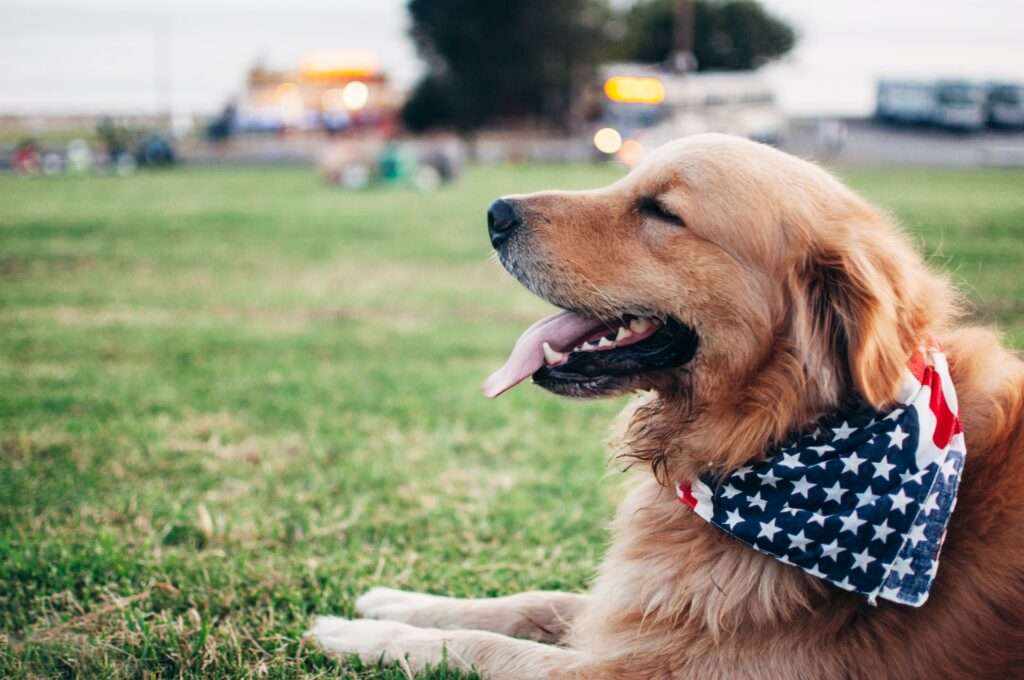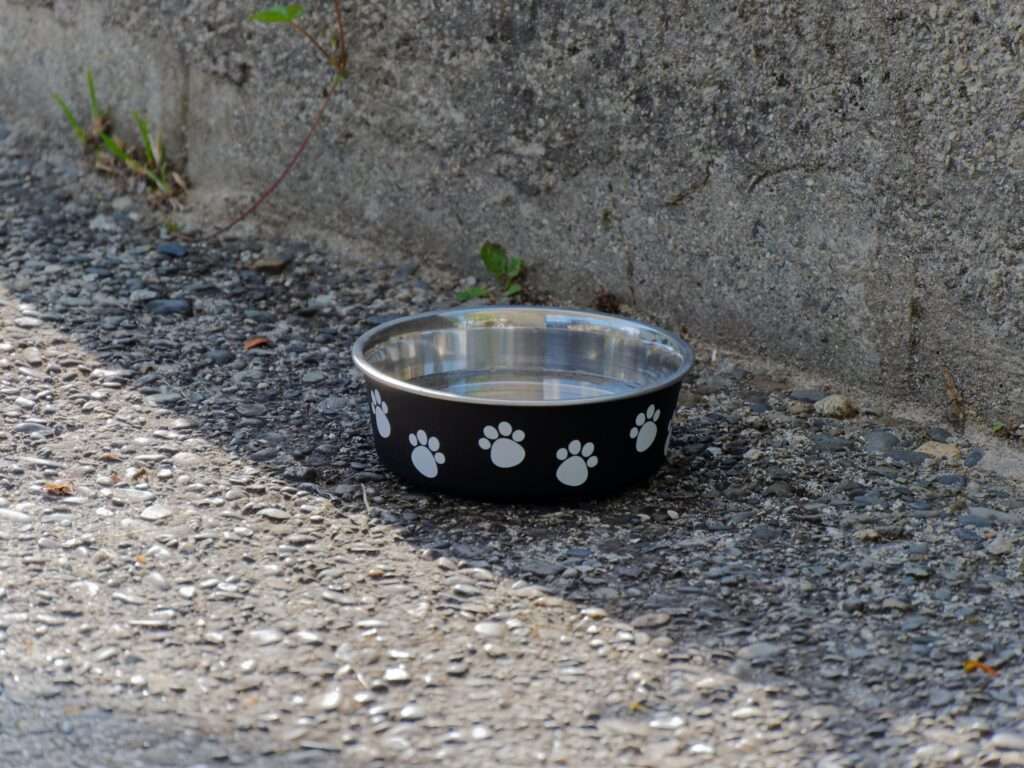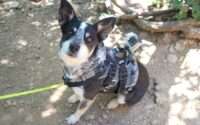How Long Can A Dog Go Without Water? The Critical Importance of Hydration
If you’re a dog owner, you know how important it is to keep your furry friend healthy. One crucial aspect of your dog’s well-being is staying hydrated. Water is essential for many of your dog’s bodily functions, such as regulating temperature and eliminating toxins. However, you may not be aware of how much water your dog needs or what signs to look for if they’re dehydrated.
In this article, we’ll discuss factors that affect a dog’s water requirements, the symptoms of dehydration, and how long they can go without water. We’ll also provide some tips on preventing dehydration and keeping your dog in good health. By keeping your dog well-hydrated, you can help ensure they have a happy and healthy life.
Factors Affecting a Dog’s Water Needs
Every dog is unique and requires varying amounts of water based on several factors. These factors include the dog’s breed, size, age, activity level, and health condition. For instance, larger dogs generally need more water than smaller dogs, and active dogs may require more water than sedentary ones.
Moreover, specific health conditions such as diabetes or kidney disease can impact a dog’s water intake. Additionally, some breeds such as Bulldogs and Pugs, which are brachycephalic, are more prone to dehydration and may require extra care to stay hydrated.
- Size and Weight: The size and weight of a dog play a significant role in determining their water requirements. Generally, larger dogs will need more water than smaller ones. A larger body size requires more fluids to support bodily functions, regulate body temperature, and maintain adequate hydration levels.
- Activity Level: The activity level of your dog affects their water needs. Dogs that are more active, such as working dogs or those involved in vigorous exercise or play, will require more water to compensate for the fluids lost through panting and sweating. It is crucial to provide additional water during and after such activities to prevent dehydration.
- Environment and Climate: The environmental conditions and climate also impact a dog’s water intake. In hot and humid weather, dogs are more likely to lose water through panting and may require extra water to stay hydrated. Similarly, dry or arid climates can increase water evaporation from the body, necessitating an increase in water intake.
- Health and Medical Conditions: Certain health conditions can affect a dog’s water requirements. Dogs with medical issues like kidney disease, diabetes, or gastrointestinal problems may require increased water intake to aid in the proper functioning of their organs and help prevent complications. Always consult with a veterinarian if your dog has a medical condition that may affect their water needs.
- Age: Age is another factor that influences a dog’s water intake. Puppies and senior dogs often have different water requirements compared to adult dogs. Puppies, with their high energy levels and growing bodies, may need more water to support their development. Senior dogs, on the other hand, may have decreased thirst sensation and might require a gentle reminder to drink water regularly.
- Diet: The type of diet a dog consumes can impact their water needs. Dogs on a dry kibble diet may require more water than those on a wet or raw food diet. Dry food contains less moisture, so dogs may need to drink more water to compensate. Additionally, dogs fed a diet high in sodium may need additional water to maintain proper hydration levels.
Remember, providing clean and fresh water at all times is crucial for your dog’s health. Monitoring their water intake, considering these factors, and making adjustments accordingly will help ensure that your furry friend remains well-hydrated and healthy. If you have any concerns about your dog’s water consumption, it is always best to consult with a veterinarian for personalized advice.
Signs of Dehydration in Dogs

Dehydration occurs when a dog’s body doesn’t have enough water to function properly. Recognizing the signs of dehydration is crucial as it can be a serious and potentially life-threatening condition if left untreated. Here are some additional signs to watch for:
- Lethargy and Weakness: Dehydrated dogs may appear excessively tired, lacking energy, and exhibiting overall weakness. They may be less active than usual and show a reluctance to engage in physical activities they normally enjoy.
- Dry or Sticky Gums: One of the easiest ways to check for dehydration is to examine your dog’s gums. Healthy, hydrated gums are typically moist and pink. If your dog is dehydrated, their gums may appear dry, sticky, or even pale. When pressed with a finger, the gums may take longer to return to their normal pink color.
- Sunken Eyes: Dehydration can cause a dog’s eyes to appear sunken or hollow. This occurs because the body is conserving fluids, leading to a loss of moisture in the tissues around the eyes. If you notice a significant change in the appearance of your dog’s eyes, it could be a sign of dehydration.
- Loss of Appetite and Increased Thirst: Dehydrated dogs may exhibit a decreased appetite and show little interest in food. However, they may appear excessively thirsty and constantly seek water or lick their lips frequently. Increased thirst is a natural response to dehydration as the body tries to compensate for the lack of fluids.
- Reduced Skin Elasticity: To check for dehydration, gently lift the skin on the back of your dog’s neck or between their shoulder blades and release it. In well-hydrated dogs, the skin will quickly return to its normal position. However, dehydrated dogs may have reduced skin elasticity, causing the skin to return slowly or maintain a tent-like shape.
- Dry Nose and Dry Mouth: While the moisture level of a dog’s nose can vary, a chronically dry nose or dry mouth can indicate dehydration. However, it is important to note that a wet nose does not necessarily mean a dog is well-hydrated, nor does a dry nose always indicate dehydration. Other signs should be considered as well.
Remember, prevention is key. Always ensure your dog has access to fresh, clean water and monitor their water intake to maintain proper hydration levels. During hot weather or periods of increased activity, offer additional water and provide shade to help prevent dehydration.
If you suspect that your dog may be dehydrated, it is essential to seek veterinary care promptly. Dehydration can lead to severe complications and organ damage if not addressed in a timely manner. A veterinarian will be able to assess your dog’s condition, provide appropriate treatment, and offer guidance on preventing dehydration in the future.
How Long Can a Dog Go Without Water?
Although dogs have varying water needs, one thing is certain: water is absolutely essential for their survival. While a healthy adult dog can generally go up to three days without water, it is crucial to understand that even a temporary lack of water can have severe consequences for their health.
Several factors can influence how long a dog can go without water. Age plays a role, as puppies and senior dogs have different hydration requirements. Puppies, with their rapidly growing bodies and higher activity levels, may become dehydrated more quickly than adult dogs. Senior dogs, on the other hand, may have reduced thirst sensation and may not actively seek out water, increasing their risk of dehydration.
The activity level of a dog also affects their water needs. Dogs that engage in vigorous exercise, participate in agility training, or work as service animals may require more water to compensate for the fluids lost through panting and sweating. These dogs may become dehydrated faster than those with a more sedentary lifestyle.
Environmental conditions are another crucial factor to consider. In hot and humid weather, dogs are more prone to dehydration due to increased water loss through panting. Similarly, dry and arid climates can accelerate water evaporation from the body, leading to a higher risk of dehydration. Dogs exposed to such conditions may require more frequent access to water to stay properly hydrated.
It is essential to highlight that even if a dog can technically survive for a few days without water, this does not mean it is safe or without consequences. Dehydration can have severe health implications, such as kidney failure and organ damage. In extreme cases, prolonged dehydration can even be fatal. Therefore, it is paramount to provide regular access to fresh, clean water to prevent dehydration altogether.
As a responsible dog owner, ensure that your dog always has access to water. Keep their water bowl filled with fresh water and check it regularly throughout the day. When traveling or going on outdoor adventures, bring an adequate supply of water and a portable water bowl to ensure your dog stays hydrated.
Tips for Preventing Dehydration in Dogs

Preventing dehydration in dogs is of utmost importance for their well-being. By taking proactive measures, you can ensure that your furry friend remains adequately hydrated. Building upon the information provided on the page you mentioned, here are some additional tips for preventing dehydration in dogs:
- Provide Access to Fresh Water: Always make sure your dog has access to clean and fresh water at all times. Keep their water bowl filled and check it regularly throughout the day to ensure a continuous supply of water. Consider using a spill-proof and sturdy bowl that is appropriate for your dog’s size.
- Multiple Water Stations: If you have a multi-level home or a large outdoor space, consider placing multiple water stations. This way, your dog can access water conveniently, regardless of where they are in the house or yard. Having water available in different areas encourages regular drinking and helps prevent dehydration.
- Clean Water Bowls Regularly: Regularly clean your dog’s water bowl to prevent bacterial growth and contamination. Wash the bowl with mild soap and water, rinse it thoroughly, and refill it with fresh water. Cleaning the bowl regularly helps maintain the water’s freshness and encourages your dog to drink.
- Monitor Water Intake: Keep an eye on your dog’s water intake to ensure they are drinking enough. While it may vary based on individual factors, a general guideline is that dogs should consume around 1 ounce of water per pound of body weight per day. Monitor the water level in the bowl and take note of any significant changes in your dog’s drinking habits.
- Hydration During Exercise: During physical activities or exercise, dogs may require additional water to stay hydrated. Offer water breaks at regular intervals and encourage your dog to drink during and after exercise. Carry a portable water bottle and a collapsible bowl for outdoor activities, walks, or hikes.
- Water on Hot Days: On hot and humid days, take extra precautions to prevent dehydration. Ensure that your dog has access to shaded areas and cool spots. Consider using elevated water bowls to prevent tipping and to keep the water cooler. You can also add ice cubes to the water bowl to provide refreshing hydration.
- Wet Food and Moisture-Rich Treats: Wet food contains a higher moisture content compared to dry kibble, contributing to your dog’s overall water intake. Adding moisture-rich treats or incorporating wet food into your dog’s diet can help increase their hydration levels. However, always consult with your veterinarian to ensure the diet is balanced and appropriate for your dog.
- Regular Veterinary Check-ups: Schedule regular veterinary check-ups for your dog to monitor their overall health, including hydration status. Your veterinarian can assess your dog’s hydration levels, provide guidance on proper hydration, and detect any underlying health conditions that may impact hydration.
Conclusion
Ensuring your dog remains properly hydrated is crucial for their overall health and well-being. By understanding the factors that affect a dog’s water needs, recognizing the signs of dehydration, and implementing preventive measures, you can take proactive steps to keep your furry companion hydrated and healthy.
While a healthy adult dog can typically go up to three days without water, this is not an ideal scenario and can lead to severe health complications. Factors such as age, activity level, environmental conditions, and individual variations can impact how long a dog can go without water. However, it is always best to prioritize regular access to fresh, clean water for your dog to prevent dehydration altogether.
Remember, prevention is key. By taking proactive steps to prevent dehydration and promptly addressing any signs of dehydration, you can help keep your beloved canine companion healthy and well-hydrated. With your commitment to providing regular access to water and implementing preventive measures, you can ensure that your dog remains hydrated, happy, and thriving.
Frequently Asked Questions
Q: How much water does my dog need to drink each day?
A: The amount of water a dog needs to drink can vary based on factors such as size, activity level, and environmental conditions. As a general guideline, dogs should consume around 1 ounce of water per pound of body weight per day. However, it is important to monitor your dog’s individual water intake and consult with your veterinarian for specific recommendations.
Q: Can I leave my dog without water for a few hours?
A: It is not advisable to leave your dog without access to water for extended periods, even just a few hours. Dogs need continuous access to fresh, clean water to prevent dehydration. If you need to leave your dog alone, make sure they have a sufficient supply of water available in a spill-proof bowl.
Q: How can I encourage my dog to drink more water?
A: There are a few strategies you can try to encourage your dog to drink more water. Some dogs prefer running water, so using a pet water fountain can be helpful. Adding water to their dry food or providing wet food can increase their overall water intake. Additionally, keeping the water bowl clean and offering fresh water at regular intervals can entice your dog to drink more.
Q: Can dogs drink other liquids besides water?
A: While water is the best and most natural choice for dogs, they can occasionally consume other liquids in moderation. However, it is important to avoid giving them beverages that are high in sugar, caffeine, or alcohol, as these can be harmful to dogs. Consult with your veterinarian before introducing any other liquids into your dog’s diet.
Q: How do I know if my dog is dehydrated?
A: Signs of dehydration in dogs include lethargy, dry or sticky gums, sunken eyes, loss of appetite, increased thirst, reduced skin elasticity, and dry nose and mouth. If you suspect your dog may be dehydrated, it is important to seek veterinary care for a proper evaluation and treatment.
Q: Can dehydration be treated at home?
A: Mild dehydration may be treated at home by encouraging your dog to drink water and providing a calm and comfortable environment. However, if you suspect severe dehydration or if your dog’s condition does not improve, it is essential to seek veterinary care immediately. Dehydration can lead to serious complications that require professional treatment.
Q: Are some dogs more prone to dehydration than others?
A: Yes, certain factors can make some dogs more prone to dehydration. Brachycephalic breeds (dogs with short noses and flat faces), puppies, senior dogs, and those with underlying health conditions are generally more susceptible to dehydration. Additionally, dogs in hot and humid climates or engaging in high-intensity activities are at a higher risk. Extra care should be taken to ensure these dogs stay properly hydrated.
Q: How can I prevent dehydration during hot weather?
A: To prevent dehydration during hot weather, provide ample shade and a cool resting area for your dog. Offer fresh water frequently, and consider using elevated water bowls and adding ice cubes to keep the water cool. Avoid leaving your dog in hot environments, such as cars or unshaded areas, for extended periods.
Remember, if you have any concerns or specific questions about your dog’s water needs or hydration, consult with your veterinarian. They can provide personalized guidance based on your dog’s individual circumstances and help ensure their optimal health and hydration.







